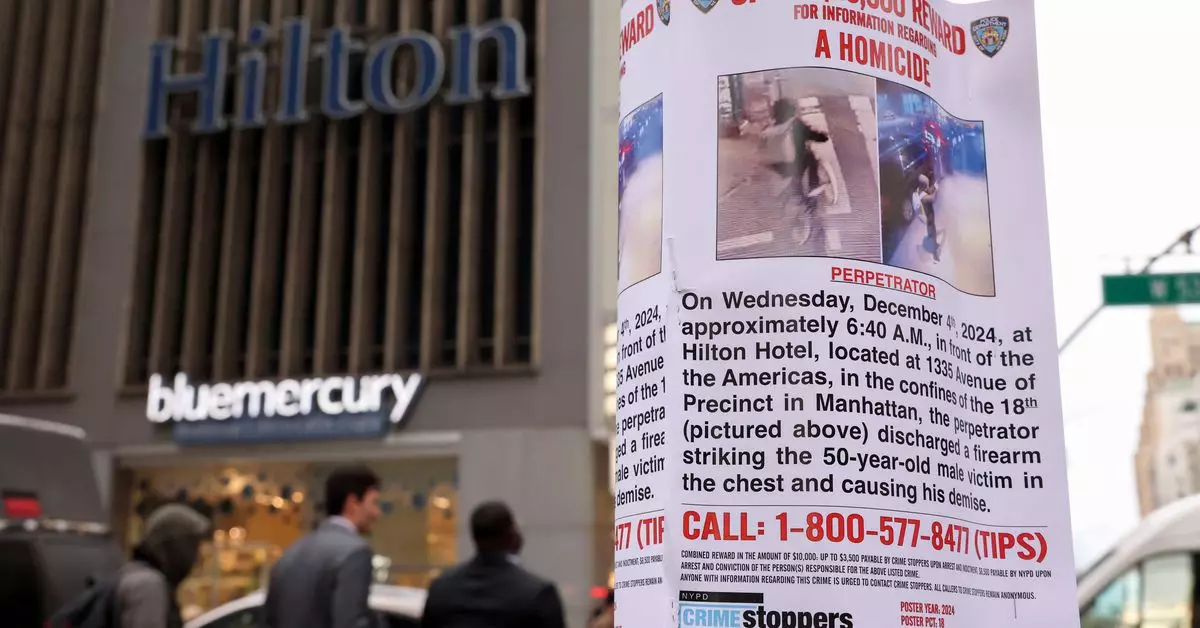In a shocking turn of events, UnitedHealthcare’s CEO, Brian Thompson, was shot and killed outside a Hilton hotel in Manhattan, provoking fear and uncertainty across the business and healthcare sectors. Reports confirm that the assailant fled the scene using an electric bike, contradicting earlier statements that suggested the use of a city-operated Citi Bike. This discrepancy not only raises questions about the investigation but also highlights the complexities involved in urban crime and the difficulties authorities face in tracking down perpetrators who utilize shared transportation options.
Thompson, who had been set to attend an investor meeting, was allegedly a targeted victim according to NYPD Chief of Detectives Joe Kenney. The brief official communique revealed a chilling note: the motive behind the killing remains an enigma. Unofficial sources suggest that there had been prior threats against Thompson, indicated by his wife, Paulette, during an interview with NBC News. This development adds a layer of intrigue to an already fraught situation, as it hints at a premeditated attack rather than a random act of violence.
As the investigation unfolds, law enforcement is piecing together critical evidence, including a cell phone purportedly belonging to the shooter, which was discovered in an alleyway nearby. There’s also attention drawn to items purchased just before the crime, such as a bottle of water and energy bars from a Starbucks. Investigators have captured video footage of the suspect earlier in the day, with significant focus on a battery seemingly intended for the electric bike. Such pieces of evidence may prove pivotal in identifying and locating the shooter.
The involvement of technology in tracking crime and its perpetrators has never been more crucial. The statement by a Lyft spokesperson reflects an understanding of the potential digital footprint that could arise if one of their bikes were misused in such a heinous act. The importance of GPS data and vehicular logs comes into sharp focus, especially in urban environments where anonymity is easily achieved through shared transport systems. As authorities sift through video surveillance from various businesses, there is a glimmer of hope that such technology might bring the perpetrator to light.
Compounding the tragedy of Thompson’s assassination is the unsettling backdrop of cyberattacks targeting prominent healthcare organizations. Earlier this year, UnitedHealthcare faced a massive ransomware crisis that compromised sensitive information for over 100 million individuals—an incident that led to weeks of turmoil and a hefty ransom payment of $22 million. This sequence of violent and cyber threats challenges not only the safety of individuals but also raises overarching concerns about the security and integrity of the healthcare industry itself.
As the NYPD continues to investigate the chilling assassination of CEO Brian Thompson, the implications of this crime stretch beyond the immediate tragedy. It serves as a stark reminder of the vulnerabilities faced by corporate leaders and points to the escalating danger surrounding high-profile figures within the healthcare sector. Stakeholders in both the public and private spheres must engage in discussions about safety, security, and the ongoing influence of technology in the quest for justice. The community anxiously awaits further developments, hoping for both resolution and answers to why such a targeted act of violence was perpetrated.

